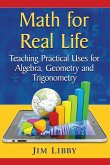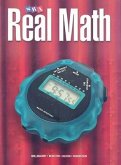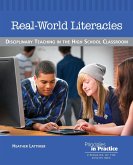How we use mathematics in our everyday lives; "What does this have to do with real life?" is a common refrain heard in math classes all across America as students confront algebra, geometry, and calculus formulas. Everyday Use of Mathematical Concepts provides the answers to that question. Up to 50 math concepts are presented here, with multiple examples of how each concept is applied to tasks in everyday life, such as work and sports. Teachers and students will find these practical applications helpful when learning new math concepts. Used on its own or alongside math textbooks, this volume meets the national standards set forth by the National Mathematics Teachers Association. In the entry discussing angles, the authors show how use of angles affects parking spaces in a parking lot. The exponential growth entry demonstrates how interest on a loan or credit card increases over time. In the equations entry, the authors show how business managers estimate how many hours it takes for a certain number of employees to complete a task. Web sites at the end of each entry provide more examples of everyday math for students and teachers.
What does this have to do with real life? is a question that plagues mathematics teachers across America, as students are confronted with abstract topics in their high school mathematics courses. The National Council of Teachers of Mathematics emphasizes the importance of making real world connections in teaching mathematics so that learning new content is meaningful to students. And in meeting NCTM national standards, this invaluable book provides many insights into the many connections between mathematics applications and the real world. Nearly 50 math concepts are presented with multiple examples of how each is applied in everyday environments, such as the workplace, nature, science, sports, and even parking. From logarithms to matrices to complex numbers, concepts are discussed for a variety of mathematics courses, including: . algebra . geometry . trigonometry . analysis . probability . statistics . calculus In one entry, for example, the authors show how angles are used in determining the spaces of a parking lot. When describing exponential growth, the authors demonstrate how interest on a loan or credit card increases over time. The concept of equations is described in a variety of ways, including how business managers estimate how many hours it takes a certain number of employees to complete a task, as well as how a to compute a quarterback's passing rating. Websites listed at the end of each entry provide additional examples of everyday math for both students and teachers.
What does this have to do with real life? is a question that plagues mathematics teachers across America, as students are confronted with abstract topics in their high school mathematics courses. The National Council of Teachers of Mathematics emphasizes the importance of making real world connections in teaching mathematics so that learning new content is meaningful to students. And in meeting NCTM national standards, this invaluable book provides many insights into the many connections between mathematics applications and the real world. Nearly 50 math concepts are presented with multiple examples of how each is applied in everyday environments, such as the workplace, nature, science, sports, and even parking. From logarithms to matrices to complex numbers, concepts are discussed for a variety of mathematics courses, including: . algebra . geometry . trigonometry . analysis . probability . statistics . calculus In one entry, for example, the authors show how angles are used in determining the spaces of a parking lot. When describing exponential growth, the authors demonstrate how interest on a loan or credit card increases over time. The concept of equations is described in a variety of ways, including how business managers estimate how many hours it takes a certain number of employees to complete a task, as well as how a to compute a quarterback's passing rating. Websites listed at the end of each entry provide additional examples of everyday math for both students and teachers.








